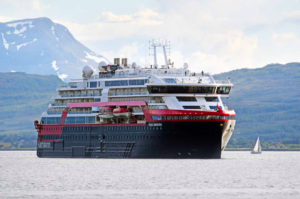Beirut Port explosion leaves thousands injured and over 100 dead
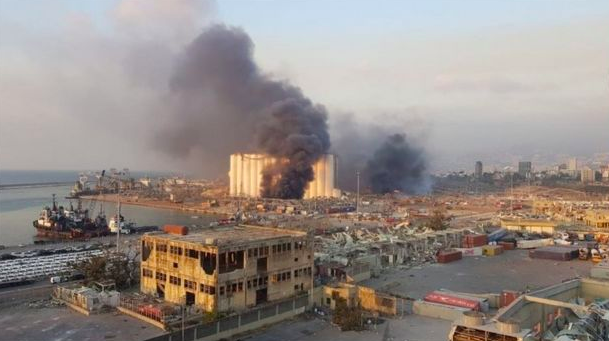
A significant explosion has occurred in the vicinity of the port of Beirut. Eyewitness observers, social media footage and local intelligence sources all confirm that a large ‘shockwave’ was visible, and caused significant structural damage to nearby buildings, with the blast radius extending at least 5-10 km from the epicentre of the explosion, says Dryad Global.
The blast is initially believed to have occurred when welding works were being undertaken on a door behind which were stored 2,750 tons of ammonium nitrate. Lebanon’s Head of General Security says the blast was caused by a fire in a depot of highly explosive material, including Sodium nitrate.
The ammonium nitrate was originally confiscated in 2013 from the Moldovan-flagged cargo vessel Rhosus, which failed Port State Control Inspections. Vessels and buildings within a 5km radius of the blast are believe to have been damaged. Properties within 500m of the blast have experienced significant damage.
According to the BBC, the blast has killed at least 100 people and injured more than 4,000 others.
Due to the high number of people who were filming the initial fire, the blast has resulted in a high number of casualties receiving cuts to the face based on glass windows being blown out, says Dryad Global.
The General Cargo vessel RAOUF H is the closest commercial vessel to the explosion with the Sierra Leone flagged General Cargo vessel MERO STAR located behind. Three local tugs are believed to have been in close proximity to the explosion. MERO STAR reports its hull has been breached, and injuries have been incurred. The Bangladeshi-flagged BNS BIJOY has also reported damage, and up to 21 sailors have been injured.
Local sources have stated that almost all of the port logistical infrastructure has been destroyed. Lebanon’s key grain silos were also destroyed in the blast. It is estimated that 85% of the country’s grain was stored here, which will greatly increase Lebanese reliance on imports.
“I express my deepest condolences and sincerest sympathies to the families of the victims and to the Government and people of Lebanon following the catastrophic explosions in the port of Beirut yesterday,” says IMO Secretary-General Kitack Lim. “The port provides a vital artery bringing food, medicines and supplies to the country and its destruction will have devastating consequences. The United Nations is assisting the immediate response to the incident. The International Maritime Organisation stands ready to assist in any way we can.”
Lebanon’s Head of General Security says the blast was caused by a fire in a depot of highly explosive material, including Sodium nitrate. He said that material was confiscated from a ship months ago and stored there.
But, according to the BBC, officials are now saying the highly explosive materials were stored in a warehouse for six years.
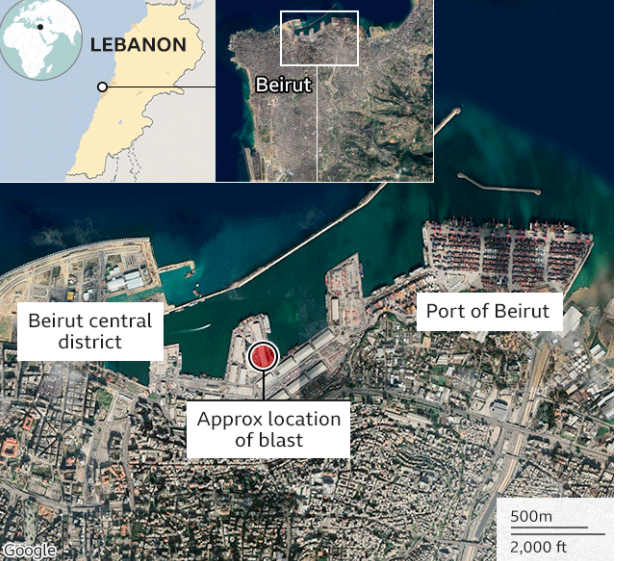
President Michel Aoun tweeted it was “unacceptable” that 2,750 tonnes of ammonium nitrate was stored unsafely.
Vessels and buildings within a 5km radius of the blast are believed to have been almost entirely destroyed, Dryad Global says. Due to location, and local reporting of other fatalities, it would be unlikely if the port location did not experience significant casualties.
Local sources have stated that almost all of the port logistical infrastructure has been destroyed. The status of vessels alongside remains unknown.
The risk to vessels intending to transit to or in the vicinity of Beirut is not immediately escalated as a result of this incident however on account of the cessation of all operations at the port and potential for chemical contamination, all vessels should avoid it, says Dryad Global.
According to the BBC an investigation is under way to find the exact trigger for the explosion. Lebanon’s Supreme Defence Council said those responsible would face the “maximum punishment” possible.
Hospitals are said to be overwhelmed and many buildings have been destroyed.
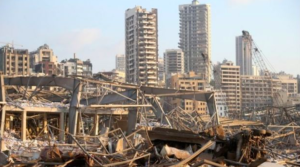 Prime Minister Hassan Diab called it a catastrophe and said those responsible must be held to account.
Prime Minister Hassan Diab called it a catastrophe and said those responsible must be held to account.
He spoke of a “dangerous warehouse” which had been there since 2014, but said he would not pre-empt the investigation. Local media showed people trapped beneath rubble. A witness described the first explosion as deafening, and video footage showed wrecked cars and blast-damaged buildings.
“All the buildings around here have collapsed. I’m walking through glass and debris everywhere, in the dark,” one witness near the port told AFP news agency.
The blast was heard 240km (150 miles) away on the island of Cyprus in the eastern Mediterranean.
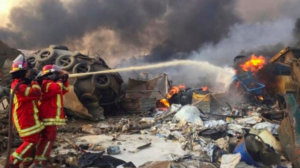 Ammonium nitrate has a number of different uses, but the two most common are as an agricultural fertiliser and as an explosive.
Ammonium nitrate has a number of different uses, but the two most common are as an agricultural fertiliser and as an explosive.
It is highly explosive when it comes into contact with fire – and when it explodes, ammonium nitrate can release toxic gases including nitrogen oxide and ammonia gas.
Because it’s so flammable there are strict rules on how to store ammonium nitrate safely – but among the requirements are that the storage site needs to be thoroughly fire-proofed, and there can’t be any drains, pipes or other channels in which ammonium nitrate could build up, creating an additional explosion hazard.


